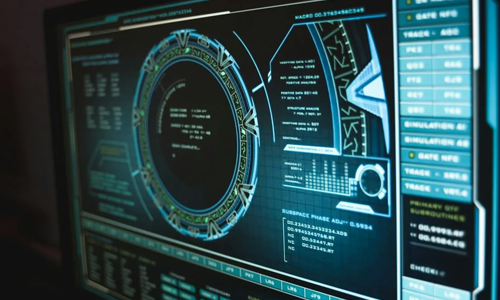When the Virtual Becomes Real: How Cyberattacks Can Cause Physical Harm

Cybersecurity
From Disruption to Disaster: How Cyberattacks Manifest in the Physical World
Many may not realize the physical infrastructure that underpins our daily lives is often controlled by computer systems. Here are some chilling examples of how cyberattacks can translate into physical harm:Crippling Power Grids
Malicious actors have targeted power grids worldwide, causing widespread blackouts. Imagine hospitals going dark during surgery or essential services like water treatment being disrupted.Tampering with Transportation Systems
Cyberattacks on transportation systems like air traffic control or railway networks can have disastrous consequences. Imagine a scenario where hackers disrupt critical communication systems leading to accidents or delays.Weaponizing Industrial Control Systems
Factories and industrial plants rely heavily on computer-controlled systems. A cyberattack could disrupt these systems, leading to malfunctions, explosions, or hazardous material releases.Disinformation Campaigns
While not directly causing physical harm, cyberattacks can be used to spread misinformation and sow public panic during emergencies, hindering response efforts.Case Studies: When Cyber Attacks Became Physical
Here are some real-world examples that illustrate the potential dangers of cyberattacks:The 2020 Florida Water Treatment Plant Attack
Hackers gained access to a Florida water treatment plant’s control system and attempted to increase the amount of sodium hydroxide, a potentially harmful chemical, in the water supply. Thankfully, the attack was detected before any harm could be done.The 2021 Colonial Pipeline Ransomware Attack
A cyberattack forced the shutdown of the Colonial Pipeline, a major fuel artery for the Eastern United States, leading to gas shortages and price hikes.Protecting Ourselves: Building Resilience Against Cyber Threats
While the potential for physical harm from cyberattacks is concerning, there are steps we can take to mitigate the risks:Strengthening Critical Infrastructure Security
 Governments and private companies need to prioritize cybersecurity measures for critical infrastructure, implementing robust security protocols and conducting regular vulnerability assessments.
Governments and private companies need to prioritize cybersecurity measures for critical infrastructure, implementing robust security protocols and conducting regular vulnerability assessments.
Promoting Public Awareness
Educating individuals and businesses about cyber threats and how to protect themselves can significantly reduce the attack surface for hackers.Enhancing Collaboration
International cooperation between governments and cybersecurity experts is crucial to share information about threats and develop coordinated responses to cyberattacks.The Future of Cybersecurity: A Call for Vigilance
As technology continues to integrate into every aspect of our lives, the potential for cyberattacks causing physical harm is likely to grow. It’s a shared responsibility for governments, businesses, and individuals to prioritize cybersecurity and stay vigilant against evolving threats. Here are some additional points to consider:The Rise of the Internet of Things (IoT)
With billions of connected devices, the attack surface for hackers is expanding rapidly. Securing these devices and implementing proper access controls is crucial.The Evolving Tactics of Hackers
 Cybercriminals are constantly developing new methods to exploit vulnerabilities. Organizations need to stay updated on the latest threats and adopt a layered approach to cybersecurity.
Cybercriminals are constantly developing new methods to exploit vulnerabilities. Organizations need to stay updated on the latest threats and adopt a layered approach to cybersecurity.
The Importance of Cyber Insurance
Cyber insurance can help businesses recover financially from cyberattacks.A Call to Action
Cyberattacks are no longer just a digital inconvenience. They pose a real threat to our physical safety and well-being. By working together, we can build a more resilient and secure digital world. Let’s prioritize cybersecurity awareness, invest in robust defense systems, and stay vigilant to protect ourselves from the ever-evolving landscape of cyber threats.Frequently Asked Questions?

01
Blockchain
Crypto Firms Seek Refuge & Opportunity in Hong Kong
May 9, 2024

01
Tech Gadgets
Apple Pencil Pro: A Game-Changer for Artists, Designers & Note-Takers
May 8, 2024

01
AR and VR
Snap Engages Users with New AR & ML Toolkit
May 7, 2024
01
Tech news
Gatherings Just Got Easier: WhatsApp Communities Now Have Built-In Event Planning
May 5, 2024
SUSBSCRIBE TO OUR NEWSLETTER
Join our subscribers list to get the latest news and special offers.
Crypto Firms Seek Refuge & Opportunity in Hong Kong
Apple Pencil Pro: A Game-Changer for Artists, Designers & Note-Takers
Snap Engages Users with New AR & ML Toolkit
Power Down to Power Up: How a Digital Detox Benefits You and the Planet